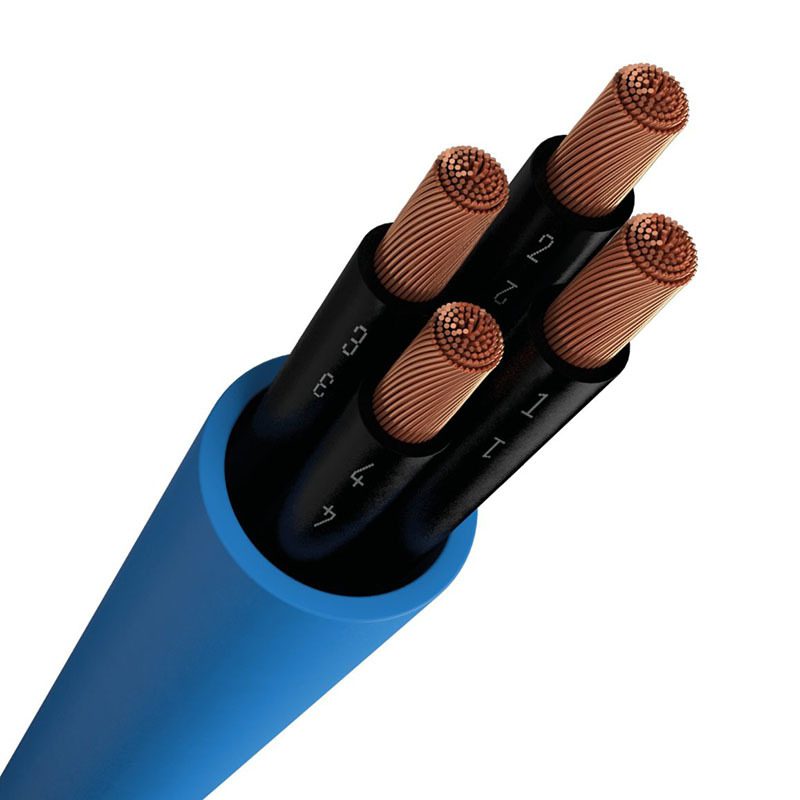
Control cable use skills overview
2024-11-12
Control cable use skills overview
Control cable is a kind of cable used to transmit signals or control circuits, which is widely used in industrial automation, power systems, building facilities and other occasions. The following is an overview of some basic specifications of the control cable, the scope of use, potential risks, and typical use scenarios.
Specification requirement parameter
1. Conductor material and structure: copper or aluminum is usually used as conductor material, and copper conductor has better electrical conductivity. Depending on the application requirements, the conductor can be in single or multi-strand form.
2. Insulation materials: Commonly used insulation materials are polyvinyl chloride (PVC), cross-linked polyethylene (XLPE), etc. It is necessary to choose the appropriate insulation materials according to the working environment to ensure the temperature resistance and flame retardant performance of the cable.
3. Sheath material: The outer sheath also needs to consider its physical and chemical properties, such as wear resistance, UV resistance, rat bite and other characteristics.
4. Rated voltage: According to the different application scenarios, the rated voltage of the control cable also has different standards, common 300/500V, 450/750V and so on.
5. Temperature rating: The operating temperature range is also one of the important considerations when selecting cables, and different materials correspond to different temperature ratings.
6. Shielding: For occasions that need to resist electromagnetic interference, control cables with metal braid or aluminum foil shielding measures can be selected.
Scope of use:
Signal transmission between industrial automation equipment
Security control system inside the building
Monitoring and protection circuit of power system
Signal control system in the field of transportation
Potential risk:
Electrical safety: If the cable is improperly selected or improperly installed and maintained, it may cause problems such as short circuit and leakage, which will cause harm to personnel and equipment.
Fire risk: Under high temperature or overload conditions, the cable may cause a fire.
Performance decline: Long-term exposure to harsh environments (such as high temperature, humidity, corrosive gases), the performance of the cable will gradually decline, affecting the normal operation of the system.
Usage scenario
Factory automation production lines: Connect various sensors, actuators and controllers for precise control.
Building automation system: used for fire alarm, security monitoring, air conditioning system and other subsystems signal transmission.
Rail transit: Signal transmission in signal lights and switch control systems.
Power substation: Signal line connection between relay protection device and measuring instrument.
To sum up, the correct selection and use of control cables is essential to ensure the stable and reliable operation of the system. In practical applications, the most suitable cable type and specification should be determined according to the specific working conditions and technical requirements.
Under different use scenarios, the design and selection of control cables will have significant differences, and these differences are mainly reflected in the following aspects:
1. Industrial automation
Features: need to withstand the impact of mechanical stress, oil, chemicals and other harsh environment.
Requirements: High flexibility, oil resistance, chemical resistance, wear resistance.
Example: Control cables in a robotic arm not only need to be able to withstand frequent bending, but also need to have good oil and chemical resistance.
2. Building automation
Features: Mainly used in indoor environment, emphasizing beautiful and hidden installation.
Requirements: Good fire performance, low smoke, no halogen, small diameter for easy wiring.
Example: The control cables used in the temperature control system and lighting control system in intelligent buildings usually require better fire performance and minimize environmental pollution.
3. Transportation
Features: Faced with vibration, shock, extreme temperature changes and other challenges.
Requirements: vibration resistance, temperature resistance, good weather resistance.
Example: The control cable in the rail transit signal system must be able to adapt to frequent vibration during vehicle operation and temperature changes in the outdoor environment.
4. Power system
Features: Applications involving high voltage or high current require strict electrical performance.
Requirements: High insulation strength, heat resistance, anti-aging.
Example: Control cables used between relay protection devices in substations require very high electrical insulation and good heat resistance.
5. Medical equipment
Features: Needs to meet special standards of the medical industry, such as biocompatibility and cleanliness.
Requirements: Non-toxic, easy to clean, resistant to disinfectants.
Example: The control cable of medical devices in the hospital, in addition to meeting the requirements of electrical performance, must also ensure that it is harmless to the human body and easy to clean and disinfect.
6. Food processing industry
Features: The environment is humid, there is food residue, it is required to be easy to clean.
Requirements: waterproof, anti-cleaning, anti-microbial growth.
Example: The control cable on the food production line needs special attention to its waterproof performance and the choice of surface material in order to facilitate daily cleaning and disinfection work.
Sum up
For different application scenarios, the design and material selection of control cables need to consider environmental factors, mechanical properties, electrical properties and other factors to ensure that the cable can work stably and reliably under specific conditions. In practical applications, it is also necessary to follow relevant national standards and industry norms to ensure product quality and safety.
Quick Quote
* Note: Please be sure to fill in the information accurately and keep the communication open. We will get in touch with you as soon as possible

Copyright © 2023 Shandong Zhongmai Cable Co., Ltd


